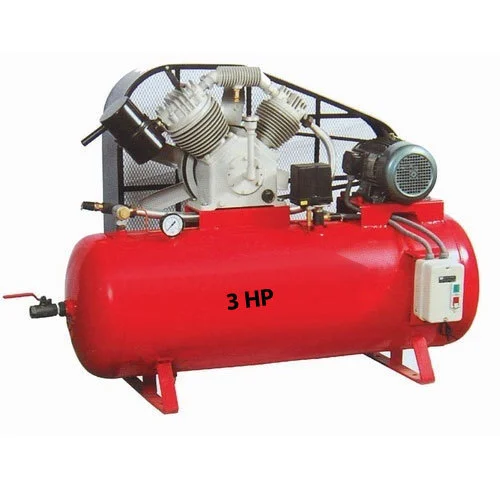Aerotech Double Cylinder Air Compressor, Aero-D-1000
₹10,000.0
| Minimum Order Quantity | 1 Piece |
| Discharge Pressure | 7 Bar – 12 Bar |
| Maximum Flow Rate | 4 – 42 cfm |
| Horse Power | 2 HP – 10 HP |
| Compressor Brand | Aerotech |
Our organization, ‘Spares Source’, was established in the year 2005. We are operating as a supplier and exporter of a quality range of Compresses Air Dryer & Accessories. We offer Air Compressor, Air Receiver Tanks, Vertical Compressor, Temperature Pressure Gauge, Water Cooled Aftercoolers, Cooling Towers, Cooling Tower Spare Parts, Pressure Transmitter, Bimetal Thermometers, Humidity & Temperature Transmitter, PID Controllers, Process Scanner & Data Logger, Signal Isolater, Pneumatic Components, Screw Compressor Spares, Air Line Accessories, Pneumatic Cylinder Accessories, Pressure Calibrator & Cylinder, Brass Fittings and Temperature Indicator. All the products that we offer are highly durable and precision engineered for long-lasting performance. Our sophisticated technology enables us to supply the most variegated products & equipment for industrial usage as per the clients’ requirements. Some of the major consumers of our products include Textiles, Iron Foundries, Paper Industries, Power plants, Automobiles and others.
You must be logged in to post a review.
Q & A
Compressed air receivers, also known as air tanks or air reservoirs, are commonly used in compressed air systems to store pressurized air. The sustainability of a compressed air receiver depends on various factors, including its design, construction materials, maintenance practices, and the overall efficiency of the compressed air system.
Energy Efficiency: Compressed air systems are known to be energy-intensive, with a significant amount of energy being lost as heat during compression and transmission. To enhance sustainability, it is crucial to focus on improving the overall energy efficiency of the system. This can be achieved by minimizing leaks, optimizing system design, using efficient compressors, and employing energy recovery techniques.
Material Selection: The choice of materials for constructing compressed air receivers can influence their sustainability. Ideally, receivers should be made from durable materials such as steel or aluminum that have a long lifespan and can withstand high pressures. These materials can be recycled at the end of their life, reducing the environmental impact.
Maintenance and Leak Detection: Regular maintenance is essential to ensure the proper functioning of compressed air receivers. Proper inspection and maintenance can help identify and fix leaks, which not only waste compressed air but also result in energy losses. Effective leak detection and repair practices contribute to the sustainability of the overall compressed air system.
Size Optimization: Proper sizing of compressed air receivers is important to maintain system efficiency. Oversized receivers can result in excessive pressure fluctuations and unnecessary energy consumption, while undersized receivers may cause frequent cycling of compressors. By optimizing the receiver size, energy usage can be minimized, improving sustainability.
Environmental Impact: Compressed air receivers do not have direct emissions during their operation. However, the environmental impact associated with their manufacturing, transportation, and disposal should be considered. Choosing suppliers that prioritize sustainable practices and proper disposal methods for decommissioned receivers can help mitigate the environmental impact.
Overall, the sustainability of compressed air receivers depends on a holistic approach that includes efficient system design, material selection, regular maintenance, and environmentally conscious practices throughout their lifecycle. By focusing on these aspects, the energy consumption and environmental impact of compressed air systems can be reduced.
General Inquiries
There are no inquiries yet.






Reviews
There are no reviews yet.